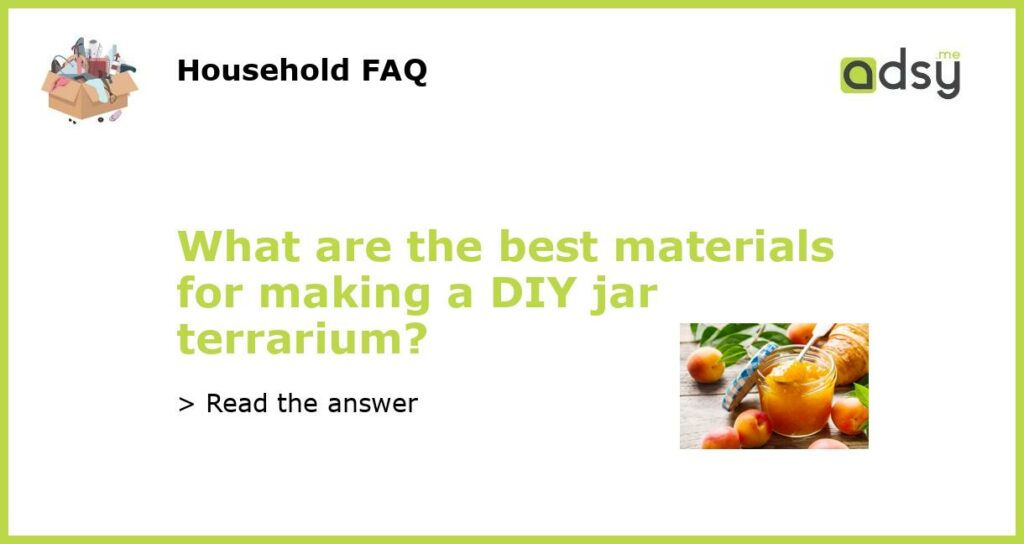The Best Materials for Making a DIY Jar Terrarium
Creating your own jar terrarium is a fun and rewarding way to bring some greenery into your home. Not only can a jar terrarium add a touch of nature to your decor, but it also requires very little care and maintenance. But what are the best materials to use when making a DIY jar terrarium? Let’s explore.
Choosing the Right Jar
The first step in creating a successful DIY jar terrarium is choosing the right jar. Ideally, you’ll want a glass jar or container with a lid to create a mini greenhouse effect. This will help retain moisture and create a suitable environment for your plants. Mason jars, fish tanks, or even old glass containers can all work well as terrarium containers.
Quality Potting Soil
Next, you’ll need to choose the right potting soil for your DIY jar terrarium. Regular potting soil, often labeled as “indoor” or “all-purpose,” is generally suitable for most plants. However, you may want to add extra materials to improve drainage and aeration. Adding a layer of pebbles or activated charcoal at the bottom of your jar can help prevent waterlogging and maintain a healthy root system.
Selecting Suitable Plants
Choosing the right plants for your DIY jar terrarium is crucial for its success. Opt for plants that thrive in high humidity and low light conditions, as these will do well in the enclosed environment of a terrarium. Some popular choices include ferns, mosses, succulents, air plants, and fittonias. Consider the mature size of the plants you choose, as you’ll want to ensure they have enough space to grow within the confines of the jar.
Decorative Elements
To make your DIY jar terrarium more visually appealing, you can add decorative elements. These can include small figurines, rocks or pebbles, colorful sand or gravel, or even small pieces of driftwood. These elements not only enhance the aesthetic appeal of your terrarium but can also create miniature landscapes or scenes within the jar.
Care and Maintenance
Finally, it’s important to understand how to care for your DIY jar terrarium once it’s assembled. Place your terrarium in an area that receives indirect sunlight, as direct sunlight can cause the glass to heat up and potentially harm your plants. Monitor the moisture level within the jar and water sparingly, only when the soil feels dry to the touch. Avoid overwatering, as this can lead to root rot and other issues. If condensation builds up on the glass, remove the lid temporarily to allow some airflow and prevent mold growth. Regularly trim and prune your plants to keep them in shape and prevent them from outgrowing the container.
In conclusion, the best materials for making a DIY jar terrarium include a glass jar or container with a lid, quality potting soil with added drainage materials, suitable plants that thrive in enclosed environments, decorative elements to enhance the visual appeal, and proper care and maintenance techniques. By using these materials and following the recommended practices, you can create a beautiful and long-lasting jar terrarium to enjoy in your home.






